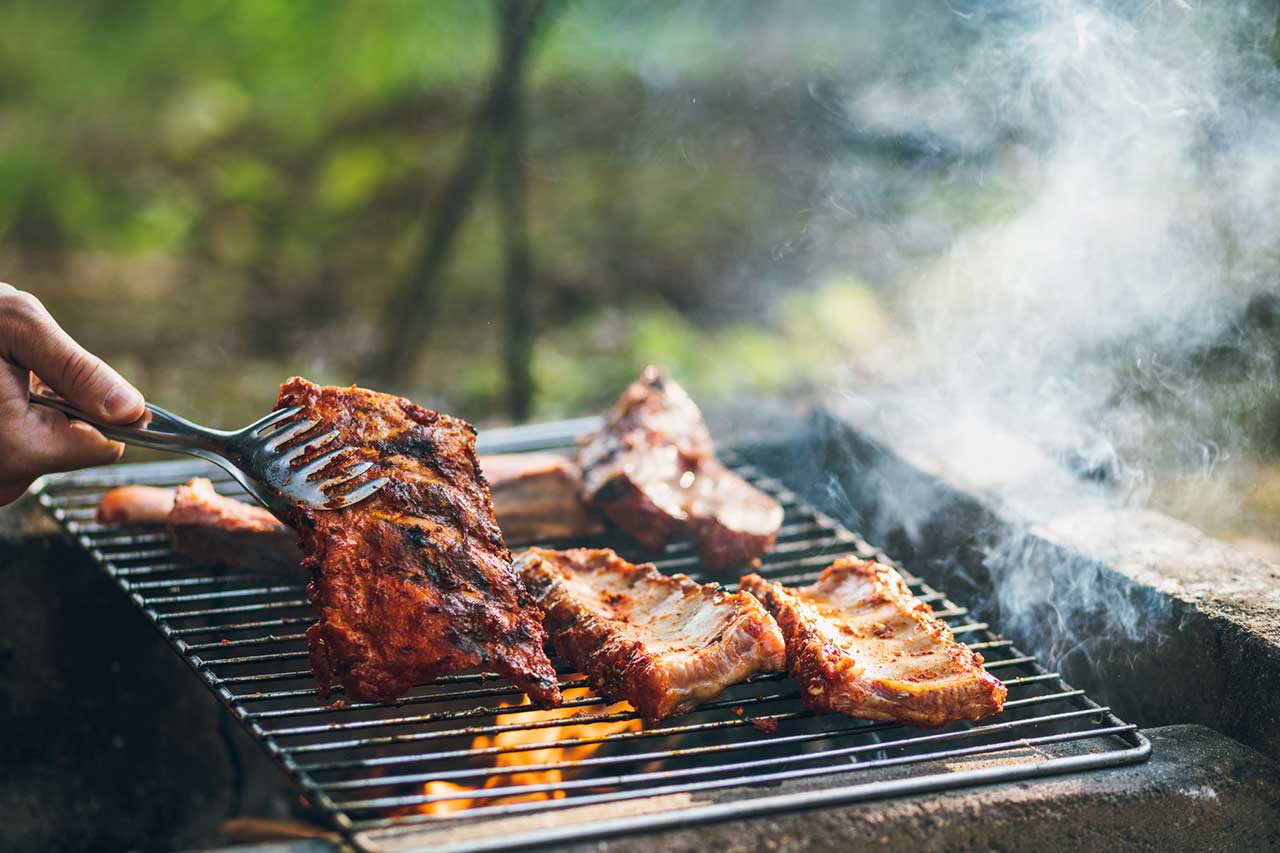
Barbecue season is here and with a brand new installment of Fire Masters – Food Network Canada’s hottest barbecue show – hitting the schedule, there is no shortage of inspiration for all things grilled, charred and smoked. Whether you plan on firing up your own grill for some meats and treats or breaking out the smoker to get that first perfectly smoked beef brisket going, there’s something about the season that just gets us salivating.
Montana’s restaurant is also getting into the mood with its own grilled meats and smoked menu, which includes items like a cold-smoked Fish Taco, a Brisket Queso-wich or those date-happy Fajitas for Two. If you’re craving that smoky flavour but you don’t have a barbecue, smoker – or time, there are plenty of eat-in or delivery options to satisfy.
If you do have a smoker though and you’re just getting into the hot- and cold-smoker game, Food Network Canada has teamed up with Montana’s BBQ & Bar to help you get started. Read on for some expert tips on how to either create or improve upon your smoked dishes this season.
Related: How to Grill Any Cut of Steak Perfectly

Plan your meal
According to Jen Hennings, the Executive Chef for Montana’s BBQ & Bar and the Director of Operations Excellence & Planning, successful smoking is all about experimentation and not rushing. She recommends researching and planning your product of choice and ensuring you have enough time on your hands to do a proper job.
“Smoking takes time,” she says. “Also, often people start too big and it’s very disappointing if the first thing you try to smoke doesn’t turn out.”
In that vein, some of the best meats to smoke for starters include easier items like turkey drumsticks, pulled pork, or even a whole chicken rather than an important meal like a smoked turkey for a holiday or that notoriously tricky smoked beef brisket.
Related: Make the Most of Your BBQ With Dylan Benoit’s Best Tips and Recipes

Marinate your meat
Depending on what you’re smoking, you’ll also want to research and plan a good marinade. And remember to add that marinade time to your overall preparation time.
As for which types of marinades work best, Hennings says it really depends on the product and outcome you’re looking for. “Typically a dry rub is best for smoking,” she advises. “If you do brine, you want to remove the meat from the brine and ensure the product is dry prior to smoking. If the meat is too wet you won’t get a nice bark on the outside.”
Related: Fire Masters Season 3: Meet the Competitors

Try cold smoking, too
Think about smoking and we often conjure up images of a hot smoke happening in the backyard. But cold smoking is also a great way to inject smoky flavour into more delicate items like cheese or fish. Unlike a hot smoke, which typically ranges from 190°F to 230°F, a cold smoker usually ranges between 65°F and 85°F.
“Hot smoking uses smoke and heat to fully cook a product,” Hennings explains. “That’s usually done on meats like ribs, pork and briskets. Cold smoking is done on more delicate items where you want to impart flavour but without cooking throughout.”

Experiment with seafood and fish
When it comes to smoked meat, we often think about pork, beef, chicken and turkey. But a smoke can also take many fish and seafood products to that next level. Fish in particular doesn’t take a long time but is unbeatable when smoked properly.
“Fattier fishes typically pick up the smoke flavor really well,” Hennings says. “Fish like trout or salmon are great to cold smoke after curing, but they’re also great to do hot. It just results in a very different product. I also love to do items like scallops or shrimp on a grill with some applewood.”
Related: Flavour-Packed BBQ Sauces, Condiments and Marinades
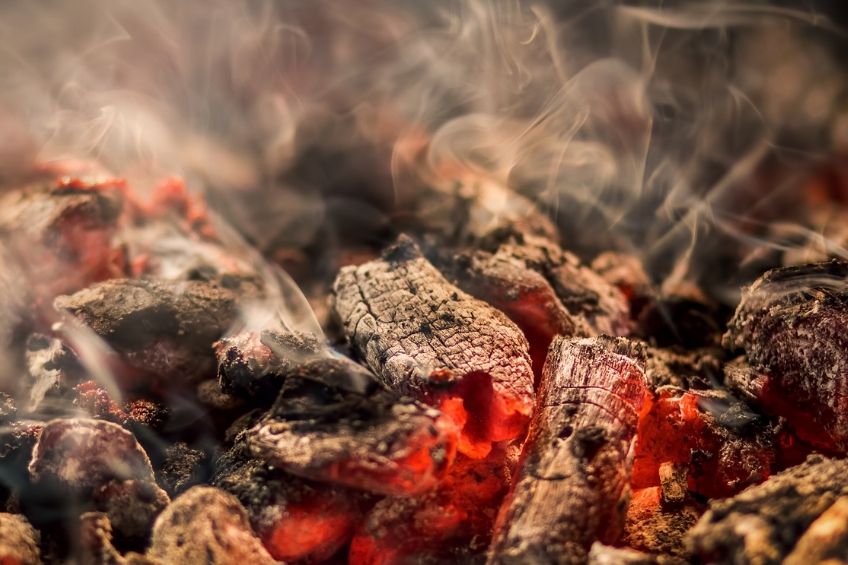
Switch up your wood chips
Wood chips are another important factor to consider when you’re firing up that smoker or grill. Whether you soak your chips depends on the product in question and technique you’re using, but it’s always important to think about matching flavour profiles to your product.
“The wood type is very important as it imparts different flavours,” Hennings explains. “If you’re smoking something delicate like fish you don’t want to use a really overpowering wood. I personally like to use wood like oak with beef, but something like an apple or cherry when smoking pork. When smoking fish I like to use alder or pecan.”
You also don’t want to overwhelm your product with smoke. For a shorter smoke session, a handful of chips at the start will do. If you’re looking at a longer session (more than four hours), consider beginning with two handfuls. A rule of thumb is to change the chips every five-to-six hours, although some like to add more chips every hour or so.
If you’re a beginner smoker, consider starting with wood chunks rather than chips as they’ll last longer. Remember that less is more when you’re starting out, because as Hennings reminds us, if you overdo a smoke there’s really no pulling back or fixing the product.
Related: Fire Masters Season 3: Meet the Cast
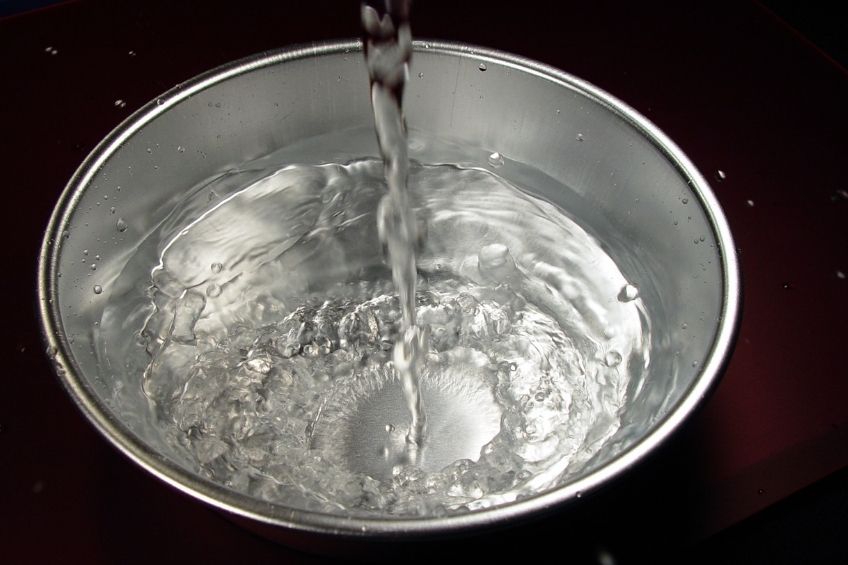
Fill the water pan
One of the keys to smoking success is creating a humid and stable atmosphere for your product so it can absorb that smoky goodness without drying out. A water pan can help stabilize temperature while blocking direct heat during certain smokes. Condensation can also adhere to the product and help it to further absorb that smoky flavour.
Whenever you’re doing a low-and-slow cook, a water pan is a good idea – no matter what the product in question. You can even add stock, beer, vinegar or other seasonings in moderation to your water to add an extra boost of flavour. If you’re cooking something like poultry at a high heat, however, you should skip filling the pan. The water will only boil and evaporate and can interfere with achieving that crispy skin.
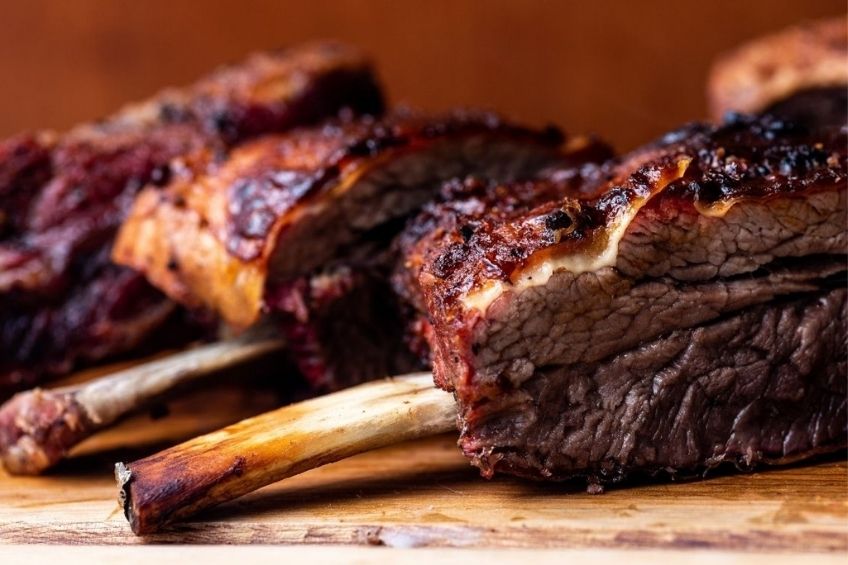
Check your progress
While smoking can be lower-maintenance than a regular barbecue, that doesn’t mean you can ignore it. Check in regularly and ensure the temperature and airflow are steady. If appropriate, you can even mist your product every once in a while to ensure a moist cook, but don’t open the smoker more than needed or that smoky goodness could escape.
When hot smoking, you want to see thin blue smoke coming out of your stack. Before you even add your product, ensure the smoke has gone through the initial dark-grey stage and settled into a good, bluish stream. The best way to do that is to check you have good airflow, hot coals and a stable temperature. If the smoke turns white that means you have incomplete combustion, AKA a dying fire that will eventually go out.
Related: How to Grill the Perfect Steak Every Time
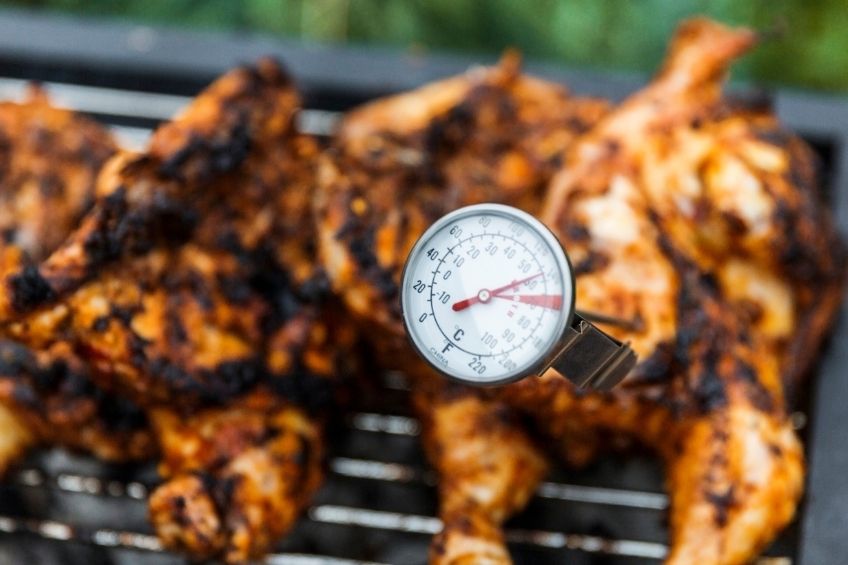
Use a thermometer
Before you begin your smoke, always know the internal temperature a product should be cooked to. A smoked brisket internal temperature should be 190°F, for example, before you remove and rest the meat. Meat thermometers with an external reader are a game-changer, as you can set a timer and gauge your progress without having to open the door.
Even with a thermometer however, don’t forget to use your senses. “It’s a combination of temperature and feel of the product,”Hennings says. “If you’re smoking a large item like a brisket or a pork shoulder you want to ensure you’re doing it low and slow to ensure it’s tender to the touch.”

Consider your sides
We all want our smoke to be the star of the show, but without a strong supporting cast the dish could be too rich for some. That’s why it’s important to think about what kinds of sides you’re serving with your main – especially when it comes to smoke.
“You want to make sure to have a balanced meal of flavours and textures,” Hennings advises. “If you’re doing a big rich brisket you’ll likely want to pair that with something lighter like salad or slaw. Vinegar helps to cut through the richness of a brisket.”
If you’re just at the beginning of your smoking adventure or you want to be a little more creative, you can also make your sides the star of your smoke show. “Alternatively, you can have fun smoking your side or starters like beans, bacon-wrapped jalapenos, or cheese,” Hennings adds.
Don’t give up
While it’s true you can’t really fix a failed smoked dish, that doesn’t mean you should give up if things don’t go your way the first time. Remember that old adage, practice makes perfect. Or in this case, a better smoked dish.
“I just recommend having fun with your smoker,” Hennings wraps. “Test out lots of items and figure out what you like best. Food is personal and everyone’s palates are different.”
Photos courtesy of Getty Images.
Watch and stream your favourite Food Network Canada shows anytime, live or on demand on STACKTV and the Global TV App. Visit the Where to Watch page for more information.
